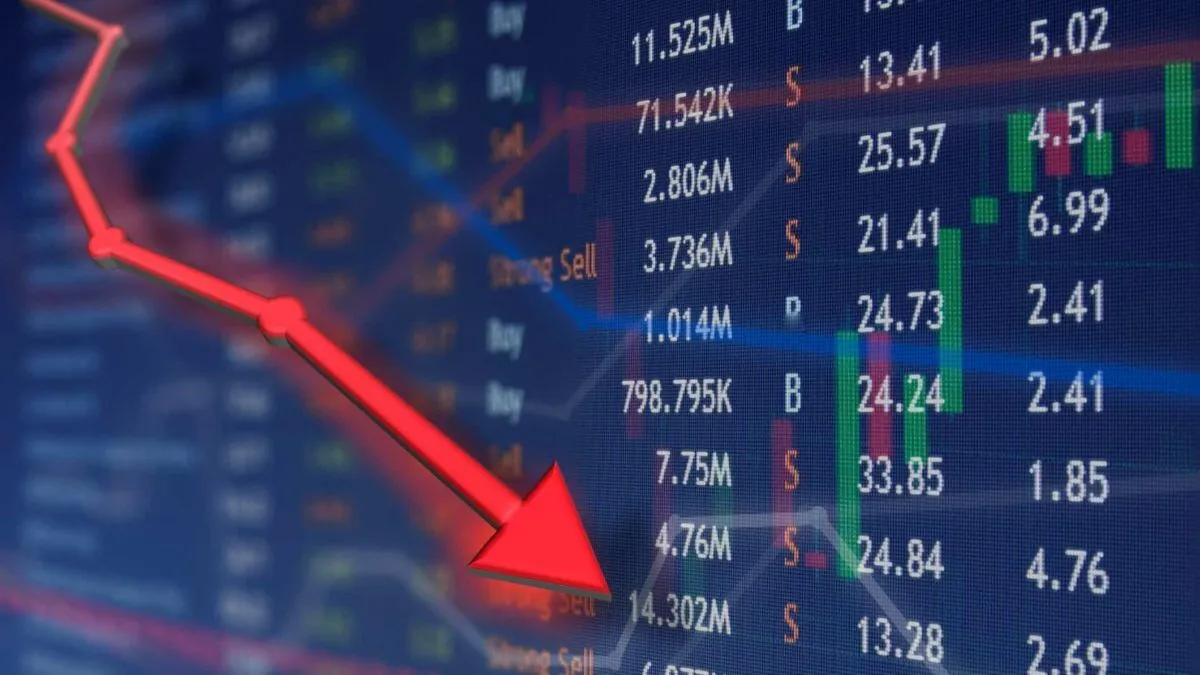
During trading in the early afternoon, Australia’s main market index has decreased by 0.7%.

However, the decline we are seeing today is not primarily caused by any particular problems related toASX 200 companies.
Instead, the Australian market is encountering macroeconomic challenges from two different sources.
Here’s what’s going on.
ASX 200 hit from two fronts
Chinese economic conditions are causing concern among Australian investors and causing the ASX 200 to decline.
Analysts predict a decrease in growth for the world’s second-largest economy and Australia’s main export market in 2024.
China’s economy expanded by 5.2% in 2023, aligning with predicted outcomes. However, experts anticipate that in 2024, the growth rate will likely drop below 5% due to the country’s ongoing challenges of excessive debts and a struggling real estate sector. Moreover, the declining population of China, although advantageous in the long run, is also exerting pressure on the economic growth prospects.
China’s December crude steel production decreased by 15% compared to the previous year, marking the lowest level in seven years. This decline in production could potentially lead to a continued decrease in iron ore prices. Recently, the price of this industrial metal dropped by 2.7% to reach US$125.80 per tonne.
Capital Economics’ Julian Evans-Pritchard commented on the uncertain future of China’s economy, which appears to be impacting the ASX 200 today.The Australian Financial Review), “The recovery clearly remains shakyAlthough we expect some initial improvements due to policy relaxation, it is unlikely that this will be able to prevent a subsequent decline later in the year.
Also Read: Australian new home construction plunges to 10-year low
Global interest rates
Hopes of a March interestExpectations for a decrease in interest rates by the US Federal Reserve are diminishing. As observed in the previous year, the ASX 200 has shown vulnerability to US interest rate forecasts.
Traders decreased their expectations for a rate cut in March from the most powerful central bank in the world, as Federal Reserve governor Christopher Waller indicated that the Fed would not act hastily in implementing a cycle of easing measures.
Yesterday, during the Australian night, Waller expressed that when the appropriate moment arises, it is possible and advisable to decrease rates. This statement was mentioned by Bloomberg.methodically and carefully.”
However, he made investors nervous and probably contributed to the selling on the ASX 200 today when he stated, “Considering that economic activity and job markets are strong and inflation is gradually decreasing to 2%, I don’t see a need to make swift or drastic cuts like we have done in the past.”
suggesting recently is that the expectation for rate cuts is increasing.missingThe main concern shared by central banks is the fear of taking action too early and having to backtrack or change direction.
And it’s not only the United States that might experience prolonged higher rates.
With inflationWith the United Kingdom’s interest rates rising after a 10-month period, it seems unlikely that the Bank of England will decrease rates in the near future.
In the English language, Ed Monk, who holds the position of associate director at Fidelity International, states that
The current increase in inflation indicates that the market is overly optimistic about upcoming interest rate cuts. Today’s results are disappointing, as it will be particularly challenging to lower the remaining high inflation levels.
However, the fact that rates are higher for a longer period of time does not imply that there are not many attractive investment opportunities on the ASX 200. Additionally, considering that the benchmark has decreased by 3.7% so far this year, it is possible that some of these larger companies are selling at a discounted price.
